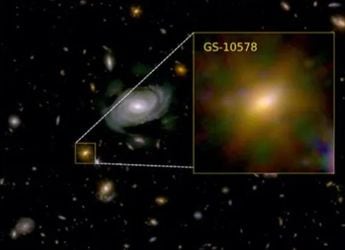- Home
- Science
- Science News
- NASA Says Water Spotted at Jupiter's Great Red Spot
NASA Says Water Spotted at Jupiter's Great Red Spot

Looking at the depths of the Jupiter's Great Red Spot, a storm that has been raging on the planet for over 350 years, NASA scientists have found water above the planet's deepest clouds.
The team led by Gordon l. Bjoraker, Astrophysicist at NASA's Goddard Spaceflight centre in Maryland, US, were looking from ground-based telescopes at wavelengths sensitive to thermal radiation leaking from the depths of Jupiter's persistent storm, when they detected the chemical signatures of water above the planet's deepest clouds.
The pressure of the water, combined with the measurements of another oxygen-bearing gas, carbon monoxide, imply that Jupiter has two to nine times more oxygen than the sun.
This finding supports theoretical and computer-simulation models that have predicted abundant water (H2O) on Jupiter, the scientists said.
"The moons that orbit Jupiter are mostly water ice, so the whole neighbourhood has plenty of water. Why wouldn't the planet - which is this huge gravity well, where everything falls into it - be water rich, too?" Bjoraker said in a statement.
The location of the water cloud, plus the amount of carbon monoxide that the researchers identified on Jupiter, confirms that Jupiter is rich in oxygen and, thus, water, Bjoraker explained.
"Jupiter's water abundance will tell us a lot about how the giant planet formed, but only if we can figure out how much water there is in the entire planet," said Steven M. Levin, from NASA's Jet Propulsion Laboratory in California.
The revelation was stirring given that the team's experiment could have easily failed. The Great Red Spot is full of dense clouds, which makes it hard for electromagnetic energy to escape and teach astronomers anything about the chemistry within.
"It turns out they're not so thick that they block our ability to see deeply," Bjoraker noted.
The data collected will supplement the information NASA's Juno spacecraft is gathering as it circles the planet from north to south once every 53 days.
If Juno returns similar water findings, thereby backing Bjoraker's ground-based technique, it could open a new window into solving the water problem, said Goddard's Amy Simon, a planetary atmospheres expert.
"If it works, then maybe we can apply it elsewhere, like Saturn, Uranus or Neptune, where we don't have a Juno," she said.
Catch the latest from the Consumer Electronics Show on Gadgets 360, at our CES 2026 hub.
Related Stories
- Samsung Galaxy Unpacked 2025
- ChatGPT
- Redmi Note 14 Pro+
- iPhone 16
- Apple Vision Pro
- Oneplus 12
- OnePlus Nord CE 3 Lite 5G
- iPhone 13
- Xiaomi 14 Pro
- Oppo Find N3
- Tecno Spark Go (2023)
- Realme V30
- Best Phones Under 25000
- Samsung Galaxy S24 Series
- Cryptocurrency
- iQoo 12
- Samsung Galaxy S24 Ultra
- Giottus
- Samsung Galaxy Z Flip 5
- Apple 'Scary Fast'
- Housefull 5
- GoPro Hero 12 Black Review
- Invincible Season 2
- JioGlass
- HD Ready TV
- Laptop Under 50000
- Smartwatch Under 10000
- Latest Mobile Phones
- Compare Phones
- Samsung Galaxy A07 5G
- Vivo Y500i
- OnePlus Turbo 6V
- OnePlus Turbo 6
- Itel Zeno 20 Max
- OPPO Reno 15 Pro Mini 5G
- Poco M8 Pro 5G
- Motorola Signature
- Lenovo Yoga Slim 7x (2025)
- Lenovo Yoga Slim 7a
- Realme Pad 3
- OPPO Pad Air 5
- Garmin Quatix 8 Pro
- NoiseFit Pro 6R
- Haier H5E Series
- Acerpure Nitro Z Series 100-inch QLED TV
- Asus ROG Ally
- Nintendo Switch Lite
- Haier 1.6 Ton 5 Star Inverter Split AC (HSU19G-MZAID5BN-INV)
- Haier 1.6 Ton 5 Star Inverter Split AC (HSU19G-MZAIM5BN-INV)

















